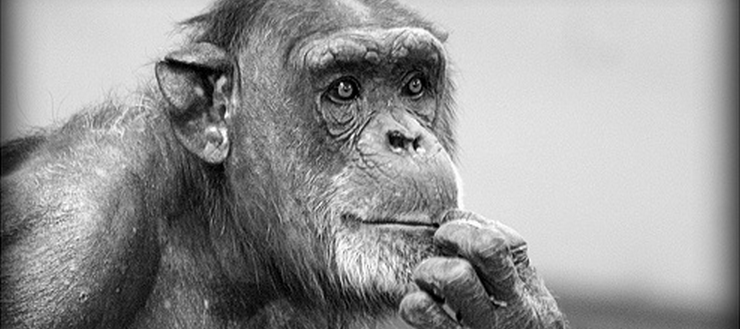Increasing Your Sales Using Behavioral Economics
Long before the advent of the internet or the television, political candidates had to think about innovative ways of getting their image out into the public: an image that could display gravitas, decisiveness, and leadership! The solution to this was found in campaign posters and live appearances. Since live appearances were not possible all the time, posters became an important element in their political strategy.
When Franklin D. Roosevelt contested for the position of the governor of New York in 1928, his campaign manager got thousands of posters printed with Roosevelt glancing towards the observer with unruffled confidence. The campaign manager later got to know that they didn’t have the rights to the picture from the studio where it had been captured.
Using the poster, now, could have threatened the campaign. This would not only have meant monetary loss, it would have also led to a lot of negative publicity. To decide against using the posters would have had a similar impact.
He decided to reassess the scenario. He called the photographer and the owner of the studio and let them know that Roosevelt’s campaign was deciding on a portrait from those taken by some of the emerging artists and studios. He asked the owner the price he was willing to shell out in order to see his work hung up all over New York. The owner was now willing to pay $120 for the honor of providing Roosevelt’s photo. He was then provided the address on which he could send the check. With this small reorganization of facts, the artful campaign manager was able to convert lose-lose into win-win: a classic example of behavioral economics!
The campaign manager had discovered the extraordinary law of human nature –that in order to make a man desire something, it becomes imperative to make that thing hard to attain.
Behavioral economics has been used as a concept long before the term was coined. A few techniques that could help companies use this in a methodical manner are:
Care for the costs
Your task as a marketer is not only to manage competition but also to persuade a buyer to part with his money. A number of factors impact the manner in which consumers value a dollar and the pain that they feel upon expending it.
When you allow a consumer the flexibility to delay a payment, you actually increase his willingness to part with the money. Even a small delay in payments can relieve the immediate wound of parting with money and increase a buyer’s willingness to make the purchase.
Helping your customers make a choice through the default option.
The customer is smart and flooded with choices – providing a default option could sometimes abolish the need to make a decision. This should, however, be offered as a good choice to people and not mislead them. When you provide your customer with a default option, he values it more than anything else and hates to part with it. Intelligent marketers use this as a strategy to advance their business. The default principle was used by an Italian telecom company in order to increase the acceptance percentage for an offer that they made to their customers on receiving a cancellation request. The customers were informed that they would be awarded 100 free calls if they chose to keep their plan. A number of customers did not want to give up on the default calls that had already been credited to their account. Sometimes, default becomes more powerful than a discount.
Do not confuse a customer
The problem of plenty: When you reduce the number of options you provide to your customers, they are likely to arrive at a decision faster and also feel more content with their choice. They are less likely to make a purchase when overloaded with choices.
Positioning your product.
The power of relative positioning clearly influences the customers’ ability to make a decision. We can take the example of a jewellery store owner here: she was struggling with the sales for her ruby and kundan jewellery. One day, she asked her store manager to reduce the price of this jewellery by half. The store manager misinterpreted her and instead doubled the price. To her surprise, most of her ruby and kundan jewellery was sold out within the next two days. Customers associated the high price to greater quality and increased their willingness to pay. Research proves that ice cream consumers care about the brand first, flavour second, and price features last in the list.
Behavioral economics has a profound impact in smartly selling your product or service. It simply involves moving away from the ‘one size fits all’ approach and using creativity to influence the customer’s perception of an interaction.
Domino’s Pizza used behavioral economics to renovate its consumer marketing strategy. It used the approach to understand what incentives it could offer to customers. For example, a two-for-one deal was replaced by crediting consumers’ accounts with money or providing coupons to spend on future orders. This increased the purchase intent in their customers.
Another use of consumer persuasion techniques and behavioral science was noticed in the Obama campaign.
This approach is also known as Nudge Theory and examines consumer activity through understanding cognitive, social and emotional aspects behind all purchase decisions. Companies can leverage this concept to drive sales and penetrate the market.
Is your business applying behavioral economics?
-
 3
3These Quick Tips Will Drive More Traffic to Your Website
-
 0
0Essential Steps to Building Relationships with Marketing Automation
-
 0
05 email marketing mistakes you don’t want to make
-
 0
0Why Indecision Is Ruining Your Business
-
 0
0How To Create Social Media Contests That Actually Make You Money
-
 0
0The Vital Link Between Psychology and Your Marketing
Leave a Reply
When you visit any web site, it may store or retrieve information on your browser, mostly in the form of cookies. Control your personal Cookie Services here.





